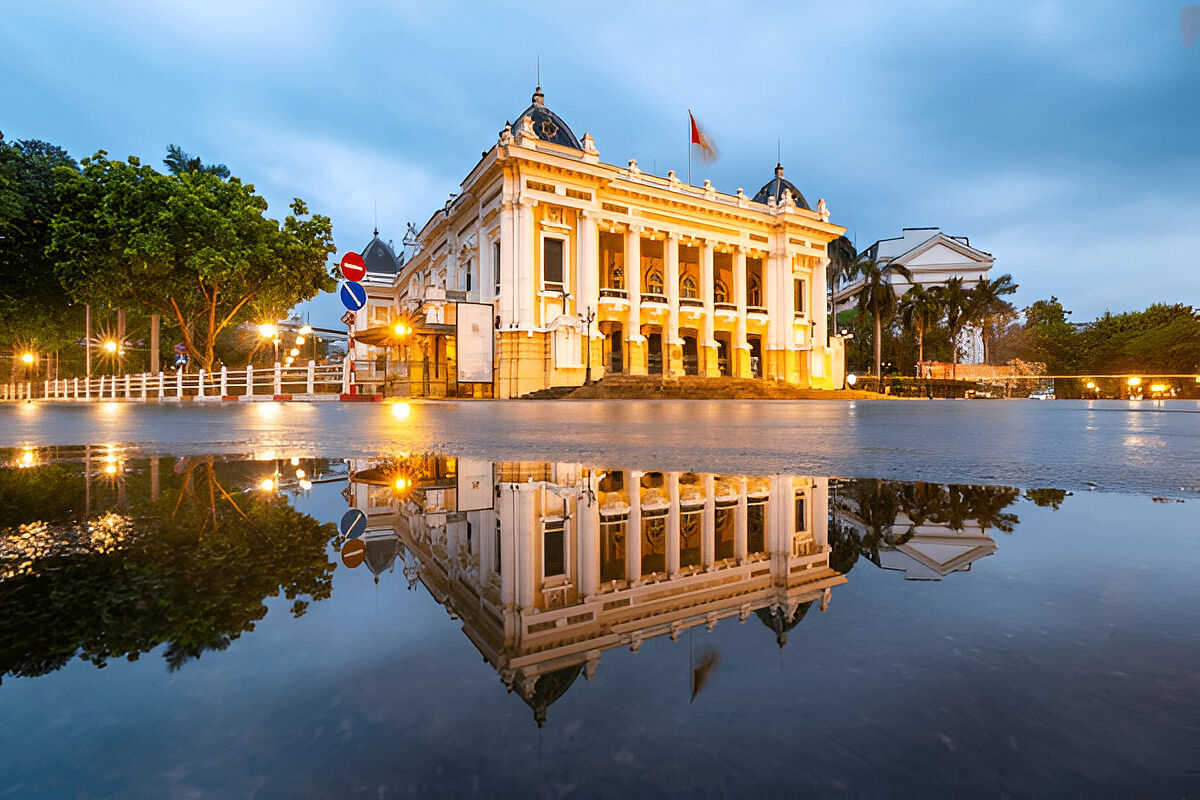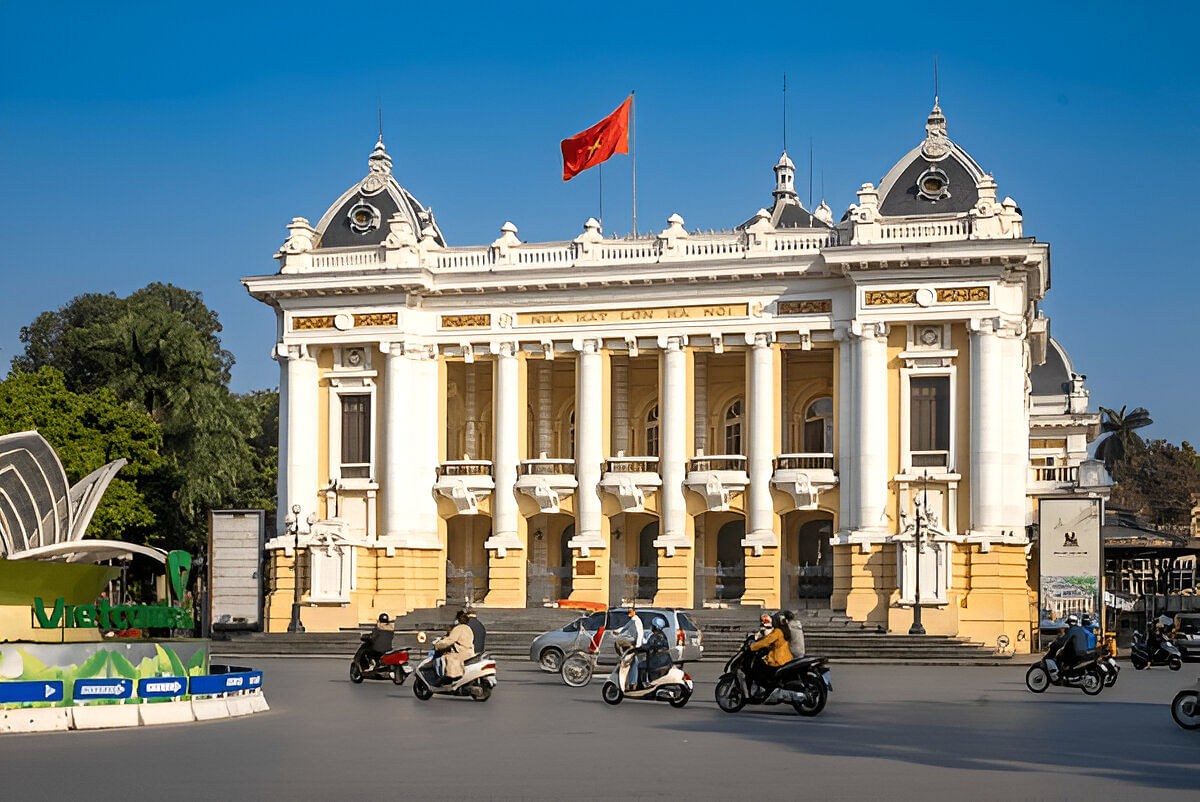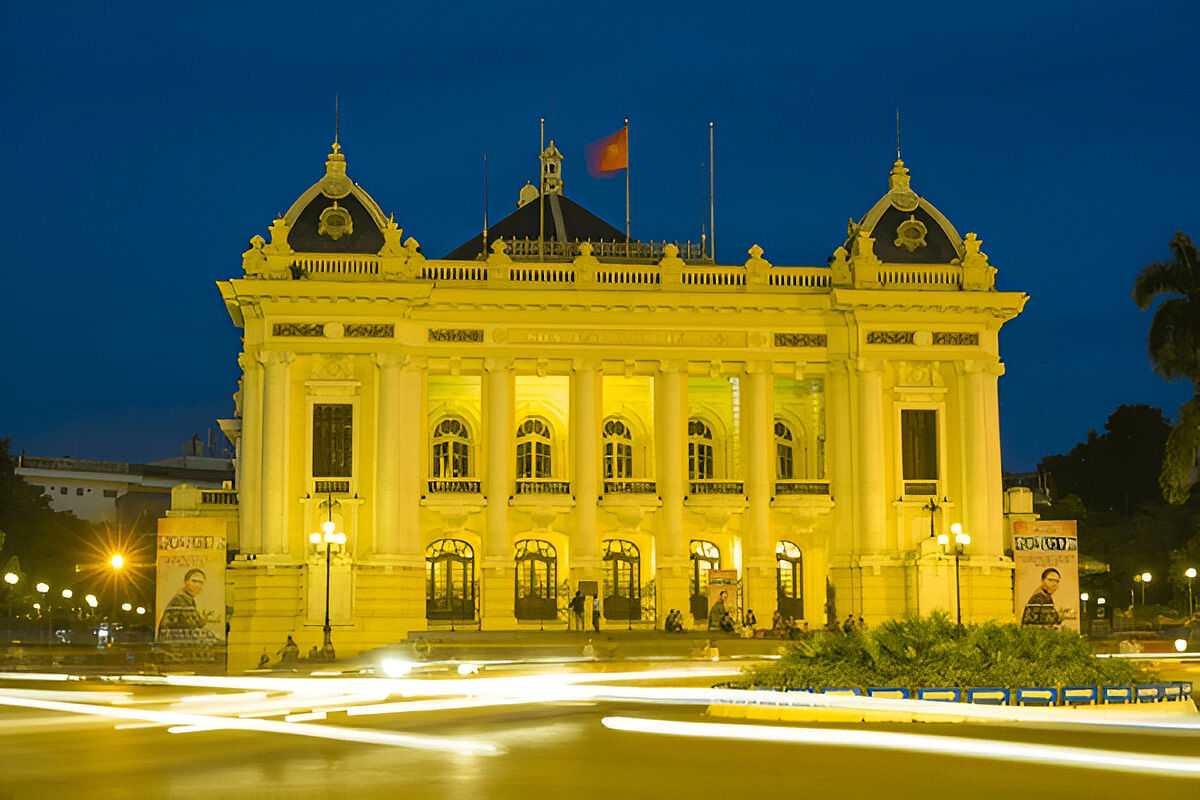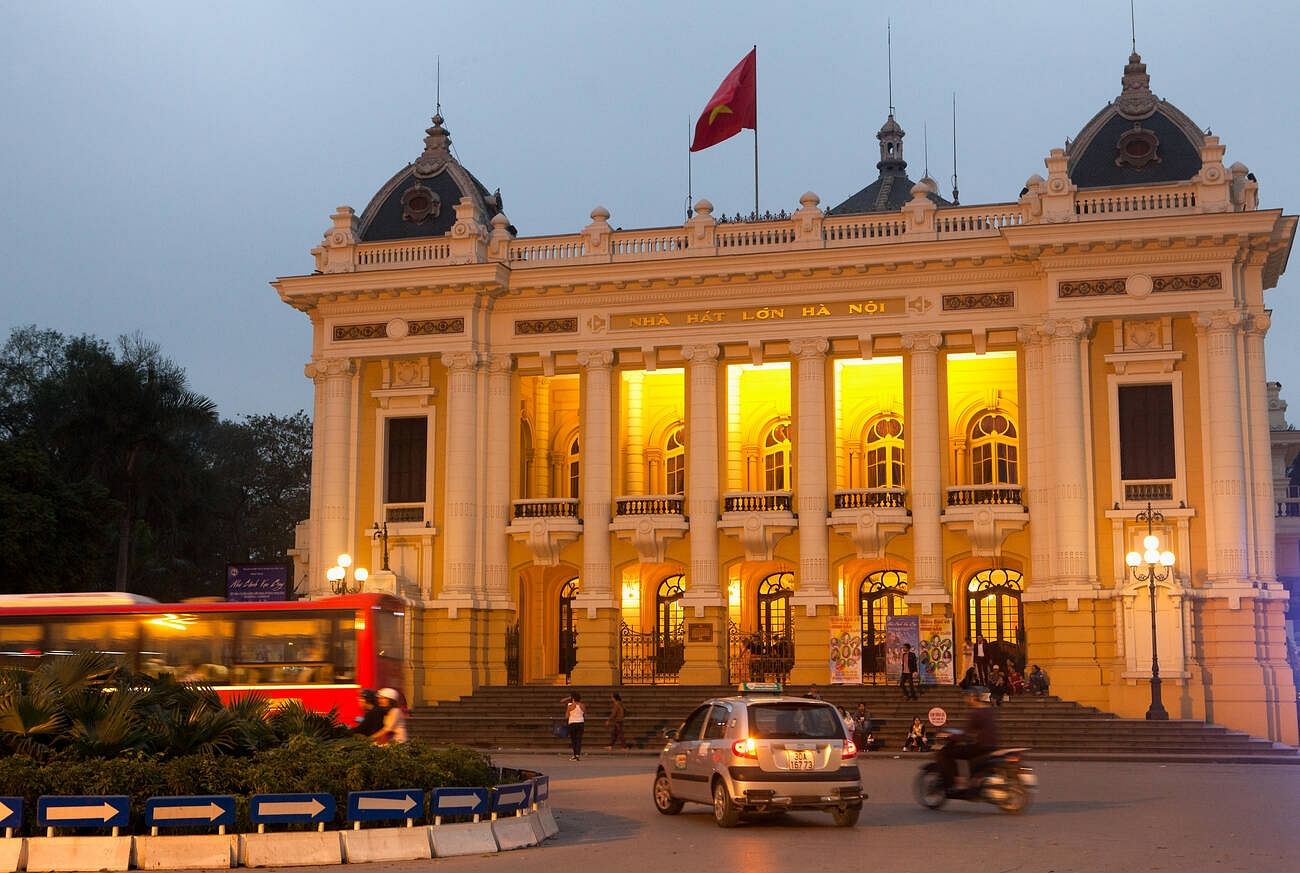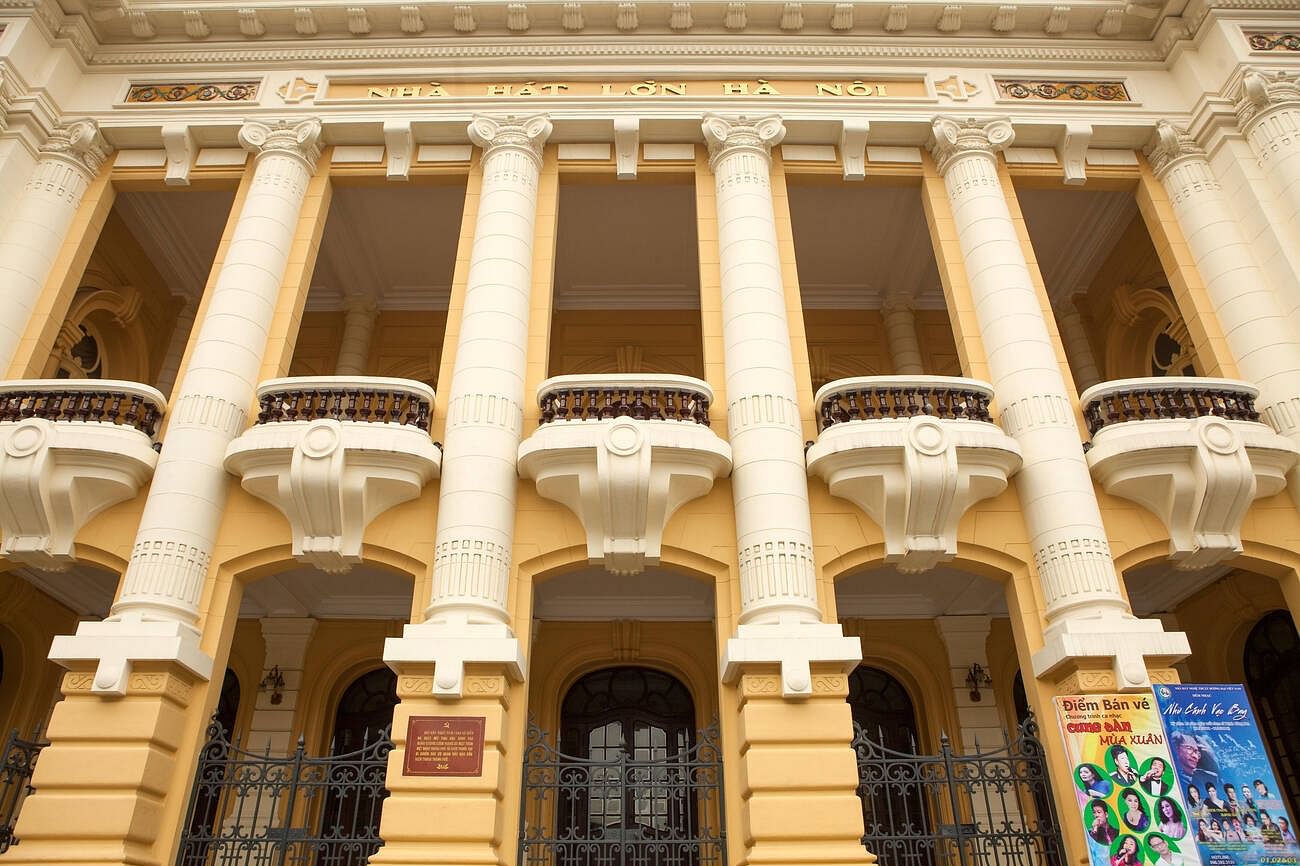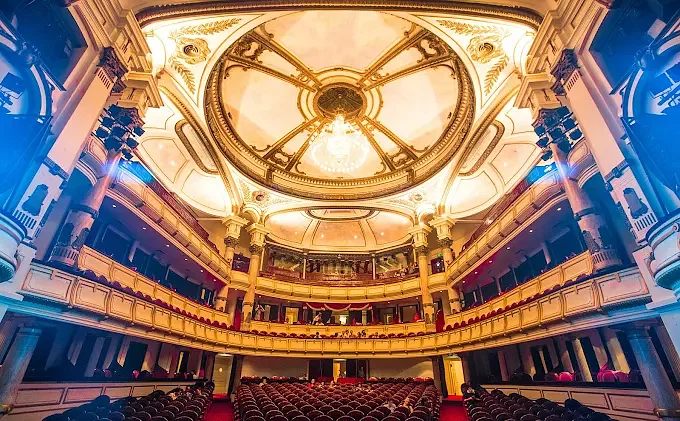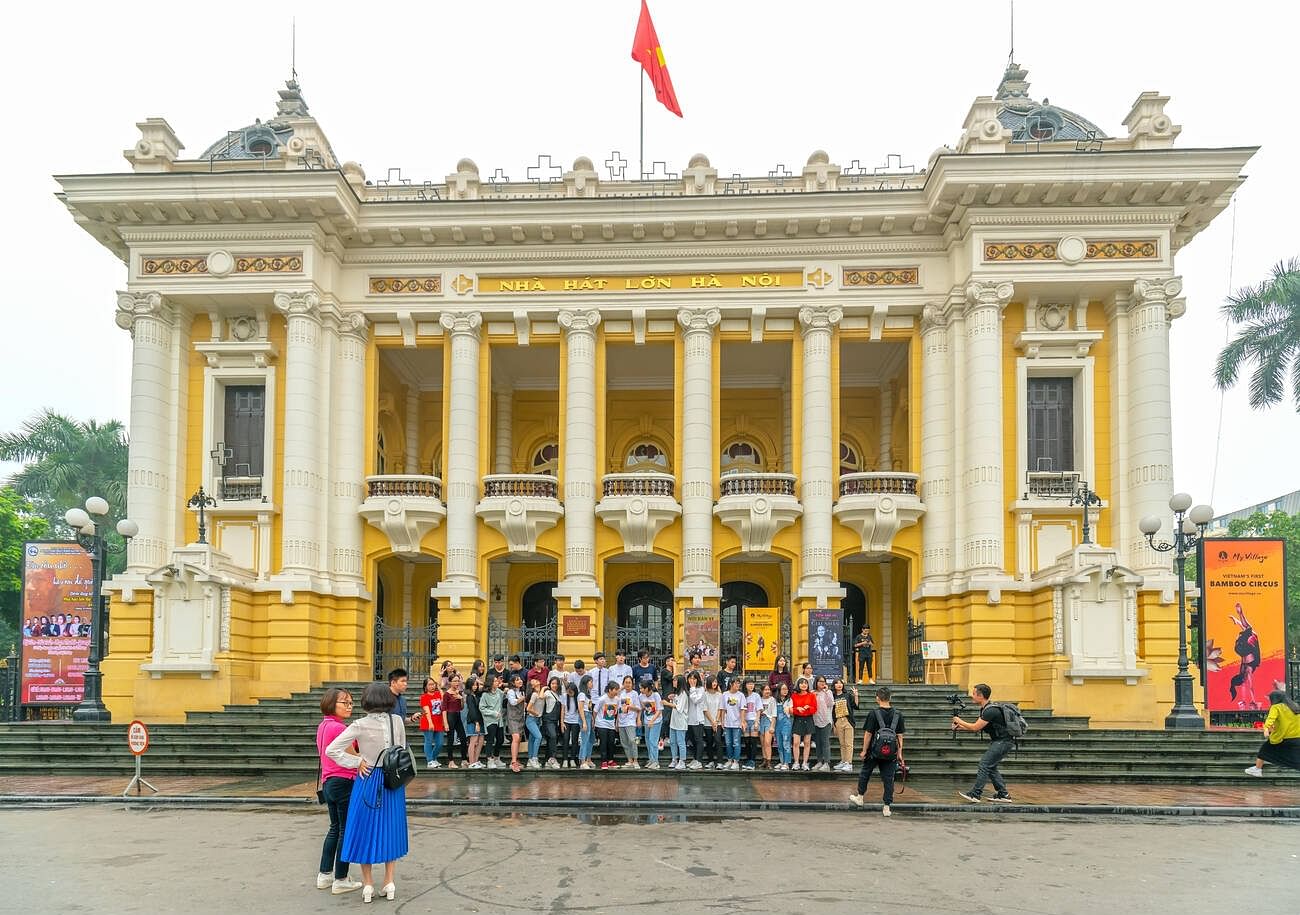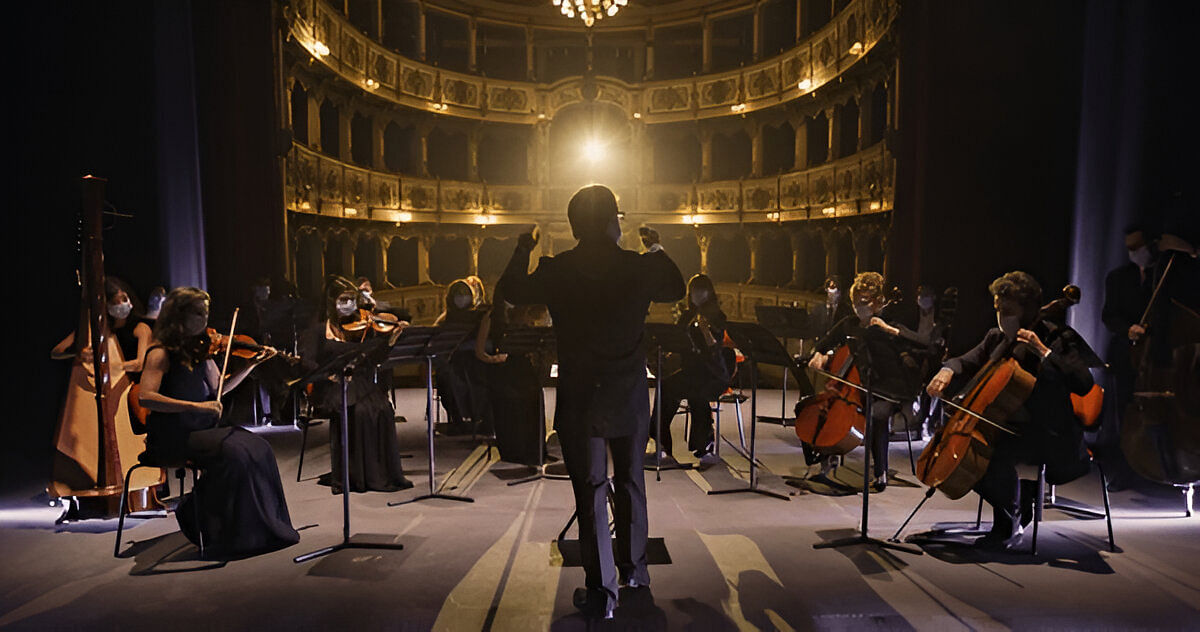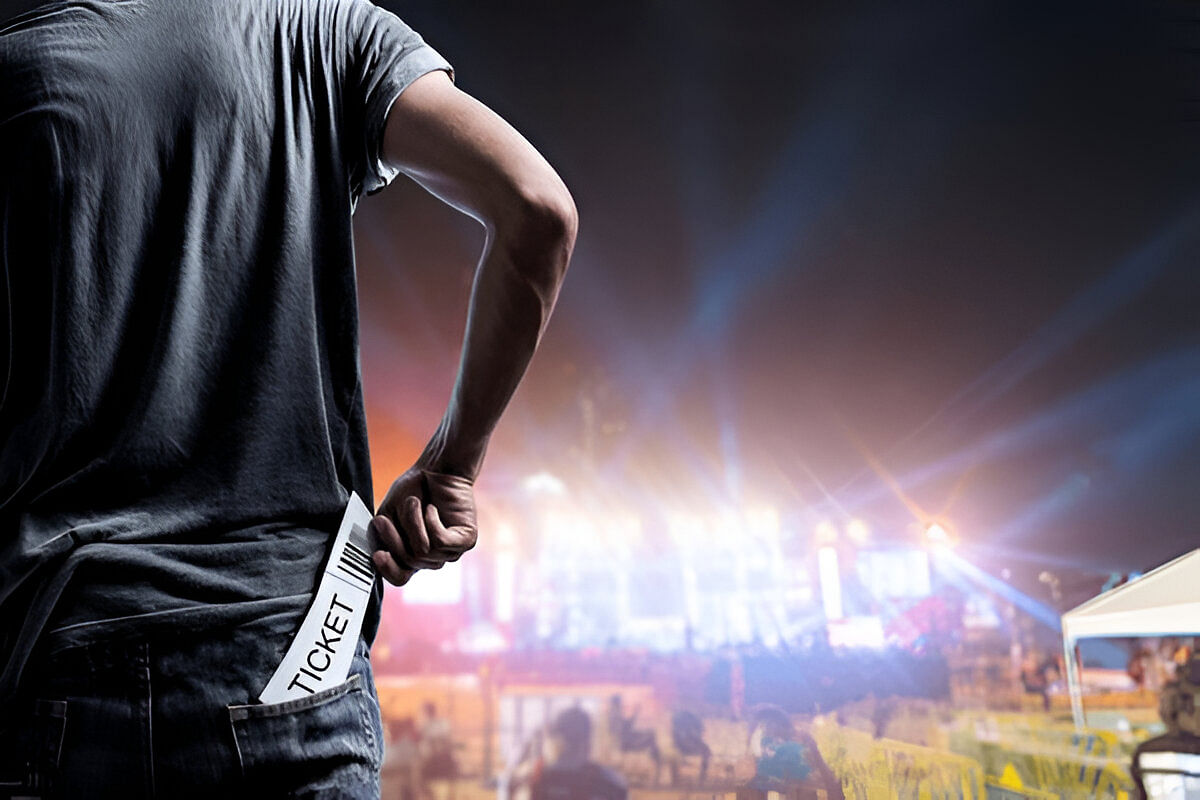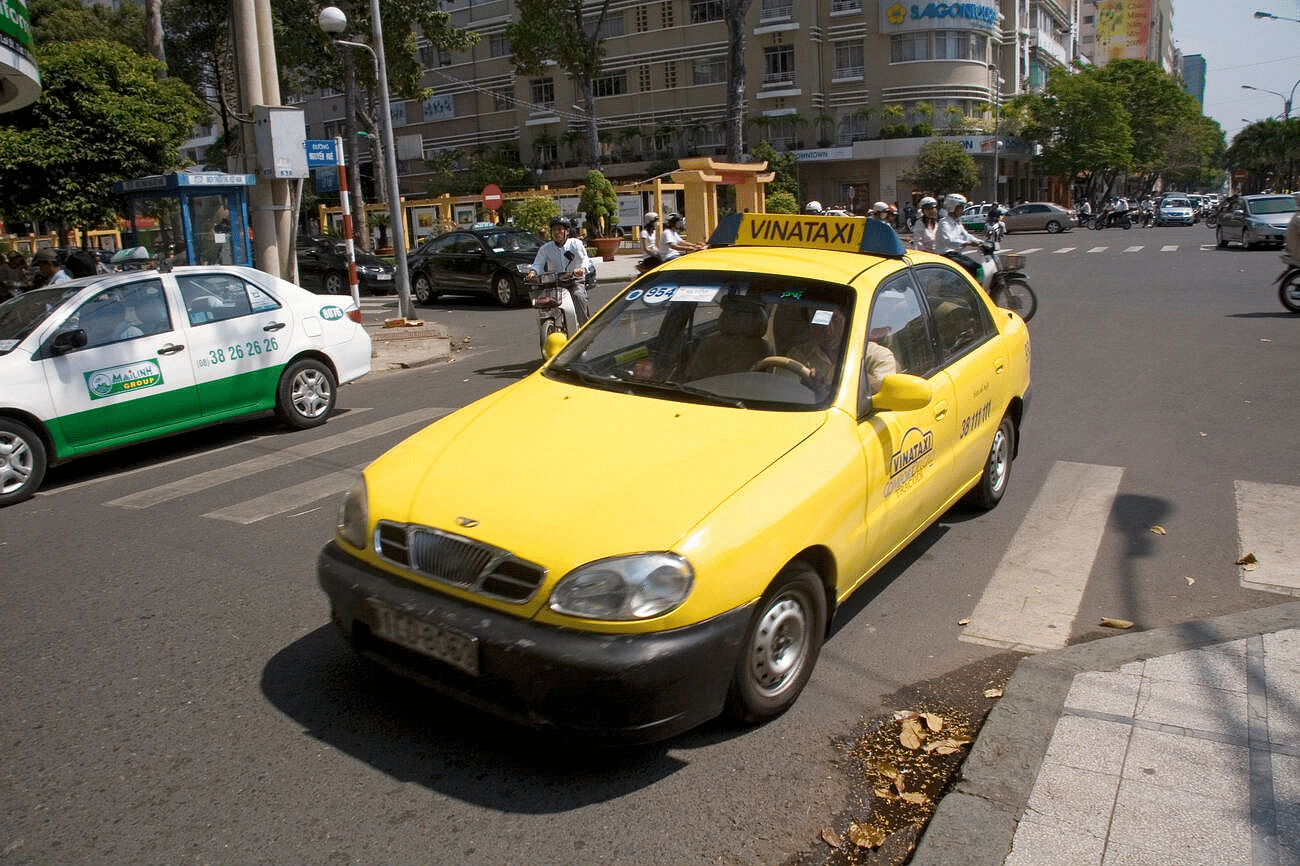What’s the point of booking your Vietnam Tour Package if you don’t get a chance to enjoy a show in the Hanoi Opera House? This building is standing strong in the capital city of Vietnam as a stunning symbol of elegance, history, and culture. The French neoclassical design of this building adds to its timeless charm with its grand yellow façade, which makes it one of the most visited places in Hanoi.
This iconic landmark is more than just a beautiful building where people from all over the world come to enjoy stage shows. Whether you're a fan of art, history, or architecture, the Opera House Hanoi is sure to leave you in awe.
Hanoi Opera House was built over a century ago, which makes it one of the rare buildings that has witnessed every event of the city. From colonial gatherings to national milestones, everything one can think of. Today, it hosts a variety of performances, from classical music and opera to traditional Vietnamese shows.
In this guide, you’ll discover the history of Hanoi Opera House, its breathtaking architecture, how to experience a show in 2025, where to get Hanoi Opera House tickets, and all the practical info like opening hours, how to get there, and more.
Let’s explore what makes it a must-visit in Hanoi!
Location: 1 Tràng Tiền, Phan Chu Trinh, Hoàn Kiếm, Hà Nội, Vietnam
A Journey Through Time: History of Hanoi Opera House
1. Built by the French (1901–1911), Inspired by Palais Garnier in Paris
The History of Hanoi Opera House begins in 1901 when the French started building it during their colonial rule in Vietnam. Inspired by the grand Palais Garnier in Paris, the opera house was designed by French architects Broyer and Harlay. It took ten years to complete, and in 1911, this architectural gem officially opened, symbolising French sophistication and artistic ambition right in the heart of Hanoi.
2. A Cultural Hub for the French Elite and Vietnamese Aristocracy
In its early years, the Hanoi Opera House served as a glamorous gathering place for the French elite and the Vietnamese upper class. Exclusive performances, concerts, and operas were staged for colonial officials, diplomats, and well-to-do locals. It was more than just a building, which also acts as a historical site of Vietnam. It was a space for cultural exchange, high society, and the growing appreciation of European art forms in Vietnam.
1. Stage for Political and Cultural Events in Vietnam’s Past
Over the decades, the Opera House Hanoi became more than a cultural venue; it turned into a historical landmark. It witnessed key moments in Vietnam’s modern history, such as patriotic gatherings, protests, and public speeches. One of its most notable events was in 1945, when crowds gathered in front of the opera house to celebrate independence. It remains a silent observer of the country's transformation through wars, revolutions, and reunification.
2. Post-Colonial Changes and Ongoing Preservation
After Vietnam gained independence, the Hanoi Opera House slowly transitioned from colonial property to a national cultural treasure. It underwent several renovations to preserve its original architecture while modernising its facilities. Today, it stands as a proud monument of resilience, maintained and cherished by the state, and still used for important performances and ceremonies. Ongoing efforts ensure this historic icon remains a living piece of the city’s soul.
Also Read: Check Out Hidden Places of Hanoi, 2025
C. Symbol of Resilience and Artistic Heritage
The History of Hanoi Opera House is not just about bricks and history; it’s about endurance and cultural pride. Despite wars, political change, and time, the building still stands tall and elegant. It represents Vietnam’s love for the arts, its colonial past, and its strength in preserving culture through difficult times. This resilience is why it continues to inspire both locals and travellers today.
Architectural Masterpiece: Hanoi Opera House Architecture
A. French Neoclassical Grandeur
1. Exterior Beauty: The Grand Facade, Columns & Sculptures
The Hanoi Opera House architecture is a perfect example of French neoclassical design. From the outside, it looks like a royal palace with tall white columns, graceful arches, and detailed sculptures. In the sunlight, the architecture of this place glows differently as it has yellow walls with white trim. The building draws inspiration from 19th-century French theatres, especially the famous Palais Garnier in Paris, giving it a European charm right in the middle of Hanoi.
2. A Nod to Paris: Inspired by Palais Garnier
The design of the Opera House Hanoi was heavily influenced by the Palais Garnier, one of Paris’s most iconic opera houses. French architects wanted to bring a slice of Europe to Indochina, and they succeeded. Though smaller in size, the Hanoi version captures the same spirit, ornate, luxurious, and made to impress. The place will make you feel like you are in Paris, even when you are in Vietnam.
Also Read: Best things to do in Hanoi, You Shouldn’t miss!
1. The Grand Foyer (First Floor): Where Elegance Begins
Step into the grand entrance, and you're greeted by a T-shaped staircase that immediately sets a dramatic tone. This area is filled with white marble, golden touches, and large chandeliers hanging from the ceiling. Decorative murals and carvings line the walls, making it feel like a movie set from a bygone era. It offers a perfect introduction to the enchanting world of opera and classical beauty.
2. The Mirror Chamber (Second Floor): A Room for Royals
Upstairs, you’ll find the Mirror Chamber, often used for important meetings and special events. The room sparkles with large crystal chandeliers and is lined with mirrors that reflect the golden tones of the space. The flooring is made of Italian mosaic tiles, adding even more elegance. This chamber speaks to the grandeur of the building and is one of the top what to see at Hanoi Opera House highlights.
3. The Auditorium (Third Floor): A Stage of Splendour
The heart of the Hanoi Opera House is its 598-seat auditorium, which is well soft-padded in rich red velvet, arranged in a classic horseshoe shape to create the best sound and views. The stage is framed with Corinthian columns and a beautifully painted dome overhead. Designed for top-notch acoustics and luxury, it’s a place where both the music and the space take your breath away.
Also Read: Find Out 15 Best Restaurants in Hanoi
C. Photography Hotspots: Where to Snap the Best Shots
If you're looking for Instagram-worthy spots, you’re in luck. The building’s front steps are perfect for full-view photos of the grand facade. Inside, the chandelier-lit foyer and Mirror Chamber offer rich, elegant backdrops. The ornate staircases, detailed ceilings, and plush seating areas are all must-capture scenes.
Remember, photography is allowed in common areas, but not during live performances.
Book Your Vietnam Tour Package Today for Special Offers!
Things to Do at Opera House Hanoi
A. A Diverse Artistic Repertoire
Whether you love Western classics or local heritage, there’s something magical happening here all year round. It’s not just a place to see a show, it’s where art comes alive in every form. The Hanoi Opera House offers an exciting variety of performances.
- Opera
- Ballet
- Classical music concerts
- Chamber music
- Vietnamese traditional arts (Cải Lương, Chèo, Tuồng)
2. Vietnam National Opera and Ballet (VNOB): The Stars of the Stage
The Vietnam National Opera and Ballet (VNOB) is one of the main resident companies at the Opera House Hanoi. Their performances are a highlight, blending international quality with Vietnamese flair.
From elegant ballets to emotionally powerful operas, the VNOB brings the stage to life. If you're planning your visit in 2025, make sure to check their schedule for truly unforgettable evenings.
B. How to Buy Tickets for Hanoi Opera House Shows
Getting Hanoi Opera House tickets is easy and convenient. You can buy them directly at the opera house's official website (hanoioperahouse.org.vn), at the on-site box office, or it will be included in your WanderOn’s package.
1. Hanoi Opera House Tickets Price: What to Expect
Hanoi Opera House ticket prices depend on the type of show and where you want to sit. For most performances, prices range from around 200,000 VND to 1,200,000 VND (approx. 658- 3953 INR). Premium ballet and opera shows might cost more, especially for front-row or VIP balcony seats. There's usually something for every budget, whether you're going for a casual visit or a special night out.
The best way to know what’s on at Hanoi Opera House is to check the official website or follow their social media pages. Performance schedules are updated regularly, and tickets often go fast for special events or international guest performances. For Hanoi Opera House Shows 2025, it’s a good idea to check ahead and plan around dates that interest you most.
3. Booking in Advance: Especially During Peak Season
If you’re visiting Hanoi during high travel seasons like Tet (Lunar New Year) or summer holidays, it’s smart to book your show tickets in advance. Many top shows sell out quickly. Booking early not only secures your seat but also gives you better options for pricing and seat location. It’s the best way to make sure your opera house visit goes smoothly.
Also Read: Top 10 Hotels in Hanoi 2025: From Luxury to Budget Stays!
C. What to See at Hanoi Opera House (Beyond a Show)
Even if you don’t attend a performance, there’s still plenty to see at the Hanoi Opera House. You can join a guided architectural tour that takes you through the grand foyer, Mirror Room, and auditorium. These tours are ideal for those who love history and design. They offer a deep look into the building’s French influences, unique décor, and how it has evolved over time.
A. Hanoi Opera House Opening Hours
1. Guided Tour Hours: Best Time to Explore Inside
If you're not catching a show but still want to explore the interior, the Hanoi Opera House opening hours for guided tours are usually from 10:30 AM to 12:00 PM, every day of the week.
These tours take you through the main highlights of the building and give insight into its history and architecture. However, always double-check the official website for any updates or schedule changes in 2025.
Most performances at the Opera House Hanoi are held in the evenings, typically starting around 7:30 PM or 8:00 PM, though this can vary depending on the event. Some special shows or festivals may offer matinee options. It’s best to check the performance time when you book your ticket so you can arrive early and enjoy the full experience stress-free.
3. Special Events and Flexible Hours
On certain days, especially during cultural festivals, national holidays, or private bookings, the Hanoi Opera House may open at different times. For example, extended hours or late-night shows are sometimes held during major events. Because of this, it’s important to keep an eye on their official announcements or call ahead if you’re planning your visit around a specific event.
B. How to Get There: Hanoi Opera House
1. Location: A Landmark in the Heart of Hanoi
The Hanoi Opera House is located at 1 Tràng Tiền Street, right in the center of the Hoàn Kiếm District. It’s just a short walk from Hoàn Kiếm Lake, the Old Quarter, and many of Hanoi’s other top attractions. Whether you’re exploring the city on foot or by vehicle, this grand building is easy to spot and even easier to reach.
2. Transportation Options: Easy and Convenient
You have plenty of choices when it comes to how to get there. Taxis and Grab (ride-hailing app) are convenient and affordable options. If you prefer public transport, common bus routes like 02, 35A, 43, 49, 55A, and 86CT stop nearby. You can also rent a motorbike or bicycle if you're feeling adventurous; it’s a lovely ride through the heart of the city.
3. Walking Distance from Other Attractions
Thanks to its central location, the Opera House Hanoi is easily accessible on foot from other major sites. You can stroll from Hoàn Kiếm Lake, the Vietnamese Women’s Museum, or the Old Quarter in just 10–15 minutes. It’s a great spot to add to your walking itinerary, especially if you love photography or want to experience Hanoi's local street life up close.
C. Essential Visitor Tips For Hanoi Opera House
- Wear smart casual clothes, like something you'd choose for a nice dinner or cultural event. Avoid flip-flops, tank tops, or very casual outfits.
- Try to arrive 15–30 minutes early. This gives you time to explore, take photos, and find your seat without rushing.
- You can take pictures outside and in the lobby, but photography is usually not allowed during performances. Flash and video recording are also not allowed.
- During a show, silence your phone, don’t record anything, and stay in your seat. Don’t bring food or drinks inside. Clap politely and enjoy the performance.
- If you're bringing children, check the age rules before booking. Some shows are okay for kids, but others may be too long or not suitable.





